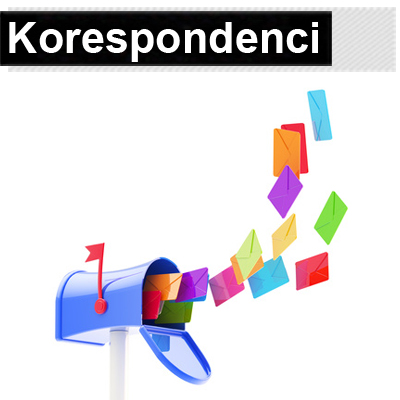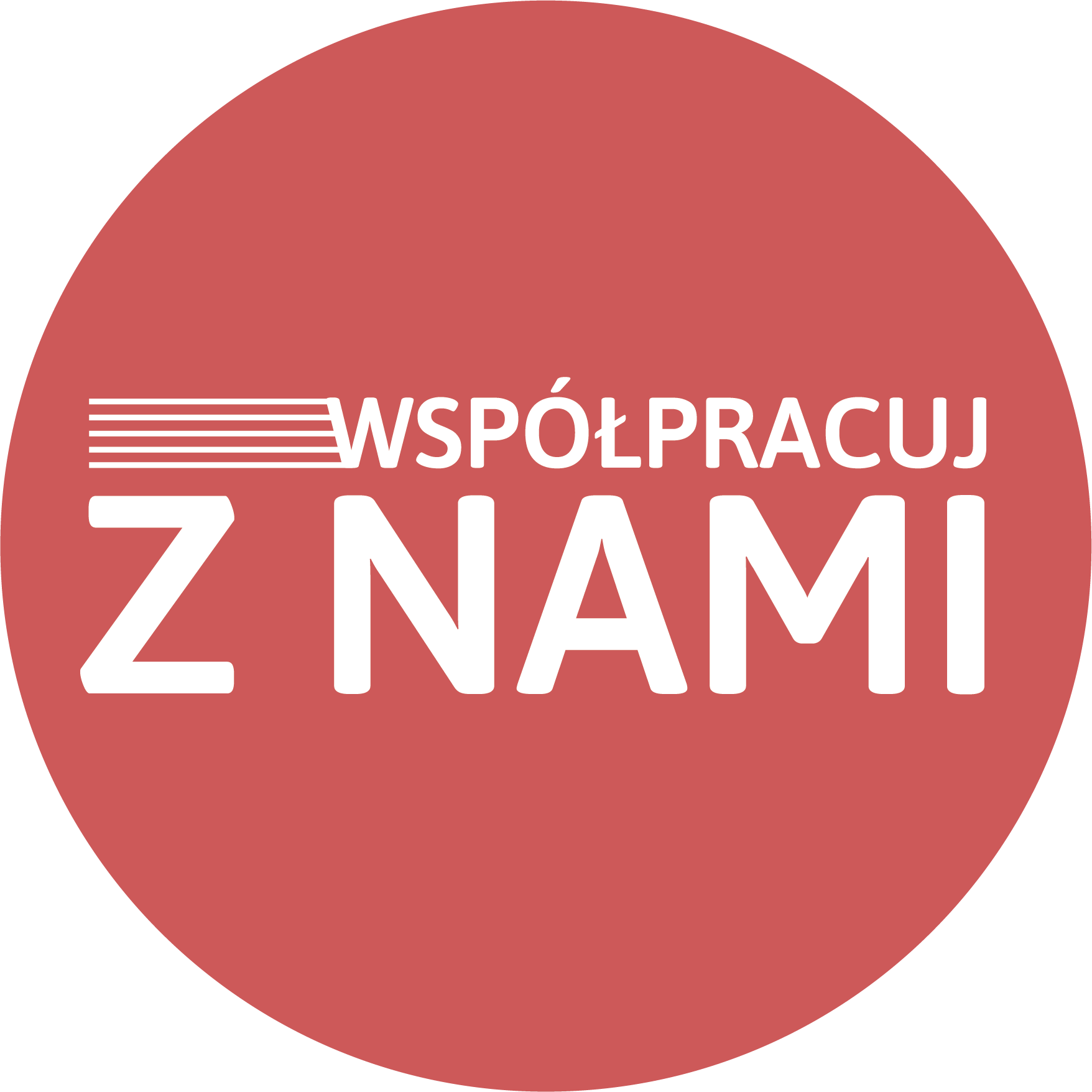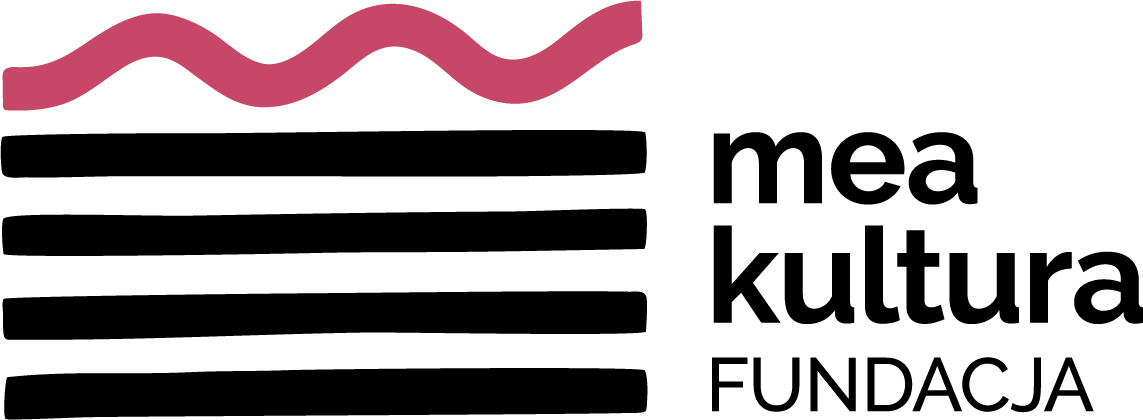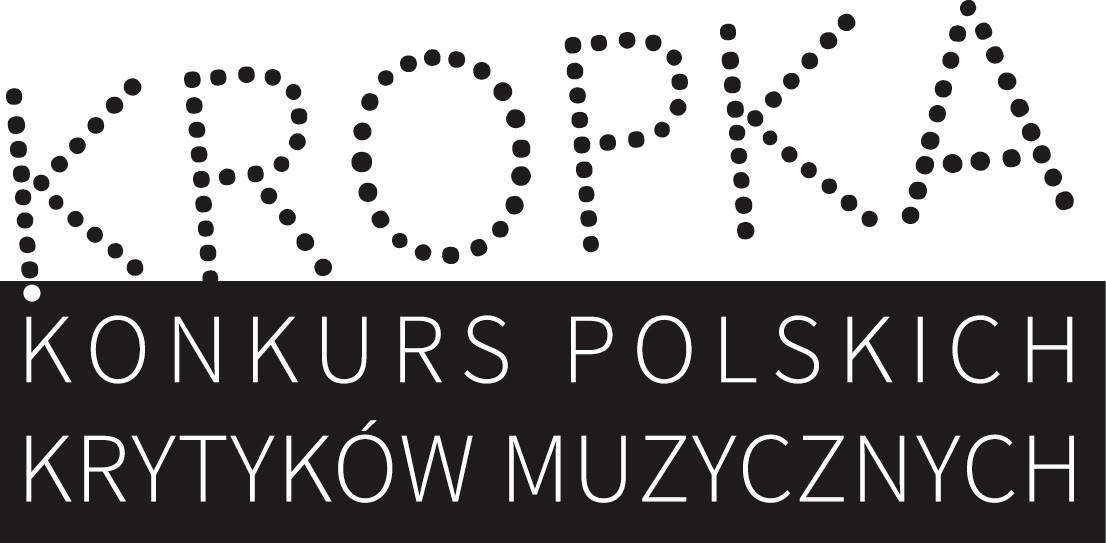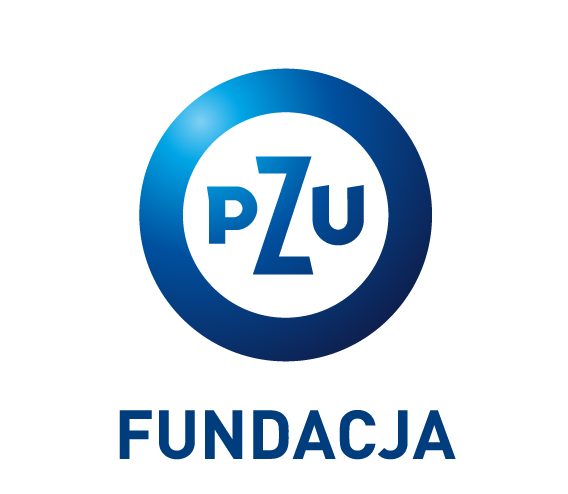On April 28-29, 2014, in the elegant palace of the Paris Section of the Polish Academy of Sciences the Second International Conference “Maria Szymanowska (1789-1831) and her Times” took place. The conference was organized by Elisabeth Zapolska-Chapelle, the president of the Societe Maria Szymanowska in Paris. Following the pattern created for the first Conference in 2011, that is, two days of presentations, a mini-recital and an artistic salon at the end, this meeting of scholars created an opportunity for a review of the state of research about the life and work of Maria Szymanowska, in the context of the contemporary culture, including her connections to eminent artistic personalities from Germany (poet Johann Wolfgang von Goethe), Denmark (sculptor Bertel Thorvaldsen) and Poland (historian-writer-politician Julian Ursyn Niemcewicz, and his sponsor Duchess Maria Czartoryska de Württemberg).
Participants of the conference came from many countries: the U.S. (Halina Goldberg, Anna Kijas, and Maja Trochimczyk), Poland (Jerzy Miziołek, Hubert Kowalski and Adam Gałkowski representing the University of Warsaw, as well as Irena Poniatowska from the National Fryderyk Chopin Institute), Germany (Maria Stolarzewicz from the Instytute of Weimar-Iena), Denmark (Karen Busk Jepsen from the Thorvaldsen Museum), Sweden (Benjamin Vogel), and France (Piotr Daszkiewicz from the Natural History Museum, and Jean-Marc Warszawski from the Musicology Institute).
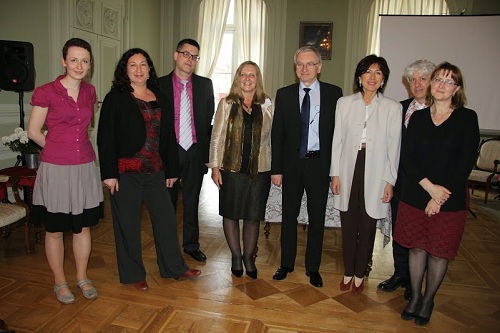
Prof. Halina Goldberg, Dr. Maja Trochimczyk, Elizabeth Zapolska-Chapelle, Jean-Marc Warszawski with the staff of the Polish Academy of Sciences and Director Zbigniew Kuźnicki, Photo by Judyta Nowak
The session was opened by Prof. Zbigniew Kuźnicki, director of the PAN Section in Paris, and the participants were warmly welcomed by Ms. Zapolska-Chapelle, before scholars ventured into their presentations and discussions in three languages: French, English and Polish (the latter in discussions only). Two presentations were dedicated to general stylistic topics: Jean-Marc Warszawski discussed the aesthetic and stylistic trends in Polish music of Szymanowska’s time and afterwards, while Prof. Irena Poniatowska presented an analysis of the concept of “salon music” – contrasted with serious, concert music, that this genre shared only some features with, being a predecessor of hit songs and popular musics of today. Dr Jerzy Miziołek, the director of the Warsaw University Museum presented a fascinating panorama of artistic culture of Warsaw and its surroundings, emphasizing the connections to neo-classical revival of Roman art, especially those recently discovered in Pompea. After the concert, with great interest, he studied in the Museum at the Polish Library in Paris a portrait of Maria Szymanowska, painted by Walenty Wańkowicz (the portrait-maker of Adam Mickiewicz). Posed as a Roman goddess, in a fashionable 19th century evening gown, but with a little angel holding a book for her, the pianist is seated in an opulent music room, with a smoking volcano visible through a window. In my 2011 paper, I identified the location of this portrait as Naples, where Szymanowska traveled in early 1825, after a visit to Rome. In terms of setting, this portrait is a twin of a portrait of the composer as a Queen of Tones (described by Dr. Benjamin Vogel), created in Rome by Aleksander Kokular in 1824.
With his broad knowledge of Roman and classical iconography and the arts of 19th century, Dr. Miziołek undoubtedly will all a lot to my interpretation of the painting. Such artistic-scholarly dialogues were at the core of the conference’s activities.
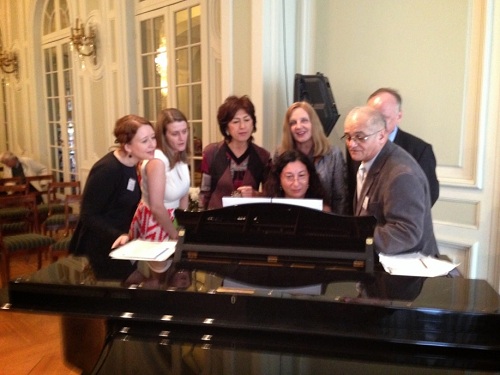
Karen Busk-Jepsen, Anna Kijas, Elizabeth Zapolska-Chapelle, Maja Trochimczyk, Adam Gałkowski and Benjamin Vogel with Halina Goldberg at the piano
Prof. Goldberg, well known from her studies of reception, milieu, and performative aspects of Chopin’s music, presented a fragment of a larger project dedicated to the study of 19th century albums as a medium for preserving and shaping memory. In the albums of autographs, music fragments, and poetry collected by Maria Szymanowska and her daughter Helena Malewska, Prof. Goldberg found examples of music that illustrates the multilevel connections of albums and memory – the constructs of half-private and half-public self images, recorded in a intimate, personal voice, but for posterity, to be seen by others. She found examples of three aspects of memory – its psychological aspect, national-patriotic memory, and nostalgic emotional dimensions of memory and memorabilia found in personal albums.
Dr. Vogel, specialist in the history of pianos revealed places where this “memorialization” of the past took place, that is aristocratic and middle-class salons and parlors where the piano had the place of honor. These pianos took the strangest shapes, including square, upright, cabinet, and giraffe, but they were always in the central spot in the home, where meetings focused on performances of songs, dances, and a variety of miniatures. The piano was once the “heart” of the home –by now replaced by the multiplicity of electronics connected to omnipresent Wi-Fi. It is a sad testimony to the change of musical culture – from participatory and performative to passive and receptive – that in the period that separated the two Szymanowska conferences, the renowned piano maker based in Paris, Pleyel, went bankrupt. The demand for pianos is not what it used to be even 50 years ago, let alone in the 19th century where everyone had to have a grand instrument in the salon and a smaller one in the separate living room for women. Broadly outlined cultural context for the stellar career of Maria Szymanowska was provided in papers by Prof. Adam Gałkowski, who discussed famous women of her time, and Dr. Piotr Daszkiewicz who talked about the connections between natural history and the arts in the early 19th century, starting from scientific interests of Johann Wolfgang von Goethe.
Broadly outlined cultural context for the stellar career of Maria Szymanowska was provided in papers by Prof. Adam Gałkowski, who discussed famous women of her time, and Dr. Piotr Daszkiewicz who talked about the connections between natural history and the arts in the early 19th century, starting from scientific interests of Johann Wolfgang von Goethe.
In the next paper, Maria Stolarzewicz discussed the connections of Maria Szymanowska and her sister Kazimera Wolowska with the famed German poet, Johann Wolfgang von Goethe. This topic was earlier extensively studied by a New York-based scholar, Anne Swartz, but Stolarzewicz added a lot to her predecessor’s research, including a handout that featured a comprehensive collection of excerpts in Goethe’s letters, writings and diaries with mentions of the great pianist. To bring this poetic-musical friendship closer to the listeners, at the final Salon, Elizabeth Zapolska Chappelle recited the poem that Goethe dedicated to Szymanowska, Aussohnung – with musical accompaniment of Szymanowska’s pieces, in the “melodrama” style popular in 19th century salons. Stolarzewicz highlighted the many different aspects of the friendship of the aging poet and the beautiful pianist, and corrected mistakes made by previous biographers of both in the interpretation of the nature of this artistic relationship.
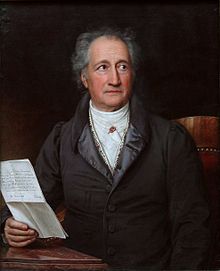
Johann Wolfgang von Goethe (1828), portrait by Joseph Karl Stieler. Wikimedia Commons
At least this friendship was never hidden by either party – something that surprisingly happened to the relationship of Szymanowska with a Danish sculptor, Bertel Thorvaldsen. The prudish and suspicious biographer of the sculptor, Just Mathias Thiele decided to omit from the artist’s biography and editions of letters all mentions of Szymanowska’s 15 letters, but also correspondence with two other artistic women that were close friends with Thorvaldsen: “ Zinaïda Volkonskaia (Russian princess, singer, writer, arranged salons first in Moscow, then Rome), and Adelgunde Vogt (Danish sculptor, animalière, virtually forgotten)” (cited from an email by Ms. Busk-Jepsen). According to Karen Busk-Jepsen neither of these women had an affair with the talented Dane, but Thiele thought otherwise and removed them in order to “purify” and “sanctify” the national artist of Denmark. How easy it is to vilify women! The fact that a romance with anyone was completely out of place in the life of a virtuous, though divorced, pianist with three children and siblings to support, never crossed the mind of Mr. Thiele. The affectionate tone of Szymanowska’s letters indicated an emotional relationship that was not revealed in the only preserved letter of Thorvaldsen to her. In any case, leaving romances aside, we should pay more attention to Thorvaldsen’s influence on Polish culture.
An important step in this direction was made in the research of Hubert Kowalski, deputy director of the Museum of Warsaw University. In his presentation (read by his boss, Dr. Miziolek), Kowalski discussed the impact of neoclassical style of Thorvaldsen on the artistic landscape of Warsaw, going far beyond the two known monuments that beautify the capital: Prince Jozef Poniatowski and Mikolaj Kopernik (Copernicus). The unveiling of the latter monument was one of the tasks performed by the then President of the Society of the Friends of Learning, Julian Ursyn Niemcewicz.
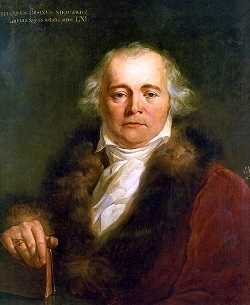
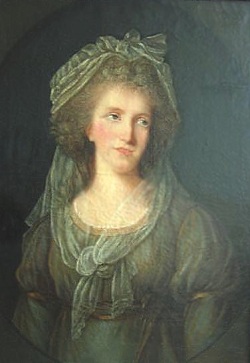
Julian Ursyn Niemcewicz by Antoni Brodowski (1820) and Duchess Maria Czartoryska by Elizabeth Vigée Le Brun (1793). Wikimedia Commons
Niemcewicz was the author of the famous Historical Chants (Śpiewy historyczne) – a bestseller of the 19th century, present in every patriotic Polish home, including the Chopin family salon in Warsaw. This volume and Szymanowska’s contribution to it was the subject of my presentation, illustrated by engravings of scenes and songs from the lives of the kings and heroes published in the original edition and its subsequent reprints. The author, poet, journalist and politician and one of his main sponsors, Duchess Maria Czartoryska de Württermberg (Wirtemberska) are fascinating personalities in Poland’s artistic and musical history, and deserve a lot more attention that could be bestowed on them in my overview. The reading and singing of chants that were being assembled for publication took place in Czartoryska’s Azure Saturdays, literary gatherings in the Czartoryski Azure Palace in Leszno near Warsaw (1806-1816). The salons provided a venue for meetings of Warsaw’s literary elite, with Kajetan Kozmian, Maksymilian Fredro, Franciszek Lessel, Karol Kurpinski, Niemczewicz and Szymanowska as frequent guests. The Czartoryski and Zamoyski families were among the main sponsors- subscribers to the first edition of the Historical Chants, also supported by Potocki and Tarnowski magnates, Warsaw school professors, the clergy and minor gentry. In PRL-period histories, the role of aristocracy in the creation of Polish culture was under-appreciated for obvious ideological reasons. Only now, 25 years after the fall of the system we can approach this topic anew, without “socialist” prejudices.
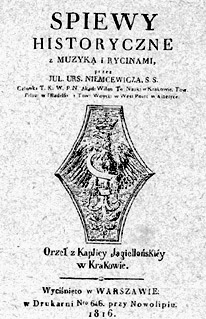
In “Śpiewy historyczne” the song about hetman Chodkiewicz was penned by Duchess Chodkiewiczowa, the song about Hetman Zamoyski was written by Duchess Zofia Zamoyska (née Czartoryska). Maria Wirtemberska set to music a song about Stefan Potocki and the whole project was inspired by a setting of Duma o Stefanie Żółkiewskim by Konstancja Narbutt, composed thirty years earlier and popular in the nobility’s salons. The greatest number of songs was by professional composers Karol Kurpiński (6) and Franciszek Lessel (10 plus a two-voice version of Bogurodzica).
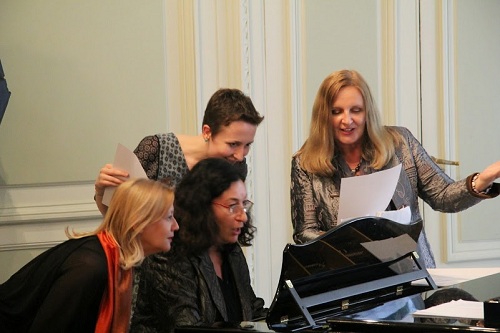
Halina Goldberg, with Małgorzata Kluźniak-Celińska and Maja Trochimczyk re-create the Szymanowska Salon. Photo by Judyta Nowak.
Ewa Talma’s contribution to the discussion was invaluable as she has shown that the first edition of 1816 was incomplete. Prof. Irena Poniatowska relayed the information found by Zofia Chechlińska about the fact that two composers, Cecylia Beydale and Lessel, were siblings and could not marry, as they had intended to. They were, apparently, out-of-wedlock children of the adventurous and amorous Maria Wirtemberska.
A visit to the Polish Library in Paris, to see the notebooks and letters of Szymanowska family in the Museum of Adam Mickiewicz provided me with a proof of the importance of this step for the future of research. The archives, always crowded by researchers, have amazing resources and I discovered, to my great pleasure the vast scope of patriotic songs copied by hand for personal use by Szymanowska’s children, Helena and Romuald. The little hand-made notebooks, that can fit in the palm of a hand and be used for group singing in the salon, included hundreds of krakowiaks, mazurs, polonaises, as well as various versions of the Dąbrowski Mazurka, Bogurodzica, and other patriotic hymns. My study of the history of Polish anthems will find a follow up in these documents.
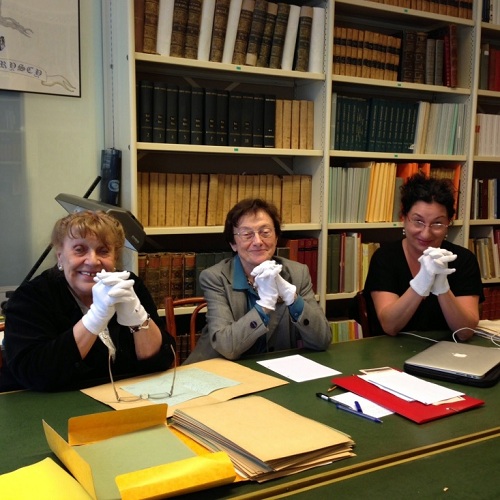
Prof. Irena Poniatowska, Ewa Talma and Prof. Halina Goldberg at the Polish Library archives at the Adam Mickiewicz Musem in Paris. Photo by Maja Trochimczyk
While I was reviewing the content of children’s notebooks, Halina Goldberg focused on the famous albums with composers’ manuscripts, in wonderful leather bindings, made to be kept and shown. As a part of her project, she had started her own album, and I had the pleasure of writing a personal note for her, as well as a silly little collage with a rain poem, inspired by our wanderings around Paris and a story by Sławomir Mrożek…
The conference was supported by the Paris Station of the Polish Academy of Sciences that hosted the events, provided excellent audiovisual support and lovely, French-and-Polish style luncheons and receptions for the scholars. Some of the conference attendees could stay in PAN guest rooms, while the Polish Institute in Paris hosted the rest of the scholars. Air France and KLM offered discounted air flights, and the Polish Library in Paris welcomed scholars for archival visits.
None of that would have been possible without the energetic and talented organizer, Ms. Zapolska Chapelle who, in addition to moderating all the sessions and introducing the speakers, delighted the audience with her rendition of all five songs of Szymanowska and fragments of two songs by others (Paris and Kurpinski) that replaced Szymanowska’s versions in the published Niemcewicz edition. The singer has already issued all of Szymanowska’s songs on a CD (Acte Prealable) that is a must for all 19th century music scholars, as well as those studying the biographies and work of Adam Mickiewicz and Fryderyk Chopin. Pianist Małgorzata Kluźniak-Celińska aptly accompanied Ms. Zapolska-Chapelle and performed solo pieces by Szymanowska at the close of the conference and at the final Salon – where we heard Goethe’s poem dedicated to Szymanowska, as well as two poems of mine, along other assorted productions, as the case may be in an impromptu performance, of a dramatically varied artistic quality. Next time, it will be better, we promise.
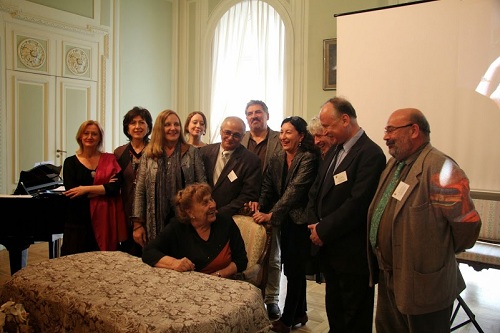
Małgorzata Kluźniak-Celińska, Elizabeth Zapolska Chapelle, Maja Trochimczyk, Karen Busk Jepsen, Benjamin Vogel, Jerzy Miziołek, Halina Goldberg, Jean-Marc Warszawski, Adam Gałkowski and Piotr Daszkiewicz surround Prof. Irena Poniatowska. Photo by Judyta Nowak
————-
